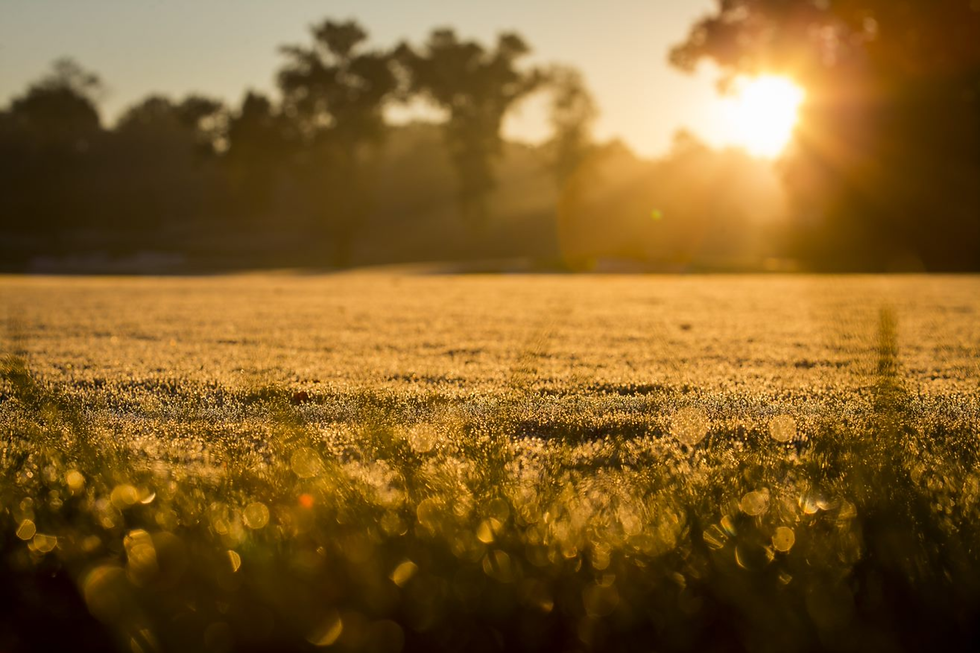Your Pasture Isn’t Broken—It’s Just Growing
- Nicole Johnson

- Aug 19
- 3 min read
You know that feeling when you walk out to the pasture and think, “Wait… is this normal?”

The grass looks patchy, a few weeds are popping up, and suddenly you’re wondering if you missed something important. If that’s you—take a breath. You’re not alone. And chances are, you’re seeing exactly what we expected.
A Walk That Said It All
Just recently, I was out walking a client’s pasture with them. We were side by side, boots in the dirt, scanning the fields and pointing out the weeds. There was a moment of concern—“Are we missing something?”—but the truth was, we weren’t.

Everything we saw was part of the natural progression of the pasture.And honestly, the value wasn’t just in the walk—it was in the conversation.By seeing what they were seeing, we could talk through what’s normal, what’s seasonal, and what actually needs attention. That’s the kind of partnership that makes a difference.
The Seed Bank: Nature’s Hidden Memory
Every piece of land holds a “seed bank”—a deep reserve of seeds built up over years or decades. These seeds lie dormant until the conditions are right to grow. And many of them? Weeds. Hardy, opportunistic, quick-to-sprout plants that love disturbed or recovering ground.
So when you mow, lime, aerate, fertilize—or just start managing the land more actively—you’re not creating weeds. You’re waking up what was already there.
From Raw to Restored: The Growth Spurts
It’s easy to imagine that good pasture management should lead to instant results: mow the weeds, seed the grass, watch it grow. But that’s not how it works in real life—especially in a place like Aiken where land has been through years of inconsistent care, compaction, or overgrazing.
What we see instead is a series of waves:
Year 1: Weed flushes dominate as the seed bank activates and soil starts breathing again.
Year 2: Forage grasses begin to take hold, but weeds are still persistent in thin or stressed areas.
Year 3: The tide turns—grasses fill in, weeds fade, and we begin to see stability.
Year 4 and beyond: We get balance, structure, and resilience—but it took time to get there.
We call these “growth spurts.” They’re messy, but they’re normal.
Your pasture isn’t broken—it’s just growing.
Horses Are Part of the Process
When we talk about pasture transformation, it’s not just the land that goes through a transition—the horses do, too.

In many cases, we’re improving pastures that were once overgrazed or dominated by low-nutrition species like broomsedge or crabgrass. Horses grazing that kind of pasture don’t just miss out on calories—they miss out on the diversity and density that builds gut health and keeps them mentally and physically satisfied.
So when the pasture changes, the horses change too.
Sometimes they overgraze the wrong areas because the new growth is too rich, or too different.Sometimes they don’t graze enough because they haven’t learned to trust the new species coming in.And sometimes the land needs time to rest—creating short-term sacrifice for long-term gain.
Horses are part of the rhythm of the pasture—not separate from it.If the land is adjusting, the horse is, too.
Trust the Process (and the Plan)
Every pasture we manage follows a long-term, horse-first plan. And no matter the timeline, the patterns are always the same:
Weeds come, then they go.
Grasses struggle, then they thrive.
Horses adjust, then flourish.
So if you’re in a season of transition and things don’t look quite right, you’re not alone. And you’re not doing it wrong. You’re just in the middle of the process - and that’s where the real work and the real transformation happens.
Let’s keep walking the pasture together literally or virtually.The more we stay connected, the better we can support your horses and your land.

Nicole Johnson is the co-founder of Juniper EquiLand, providing consultative pasture care for horse properties across Aiken County. Learn more at juniperequiland.com.




Comments